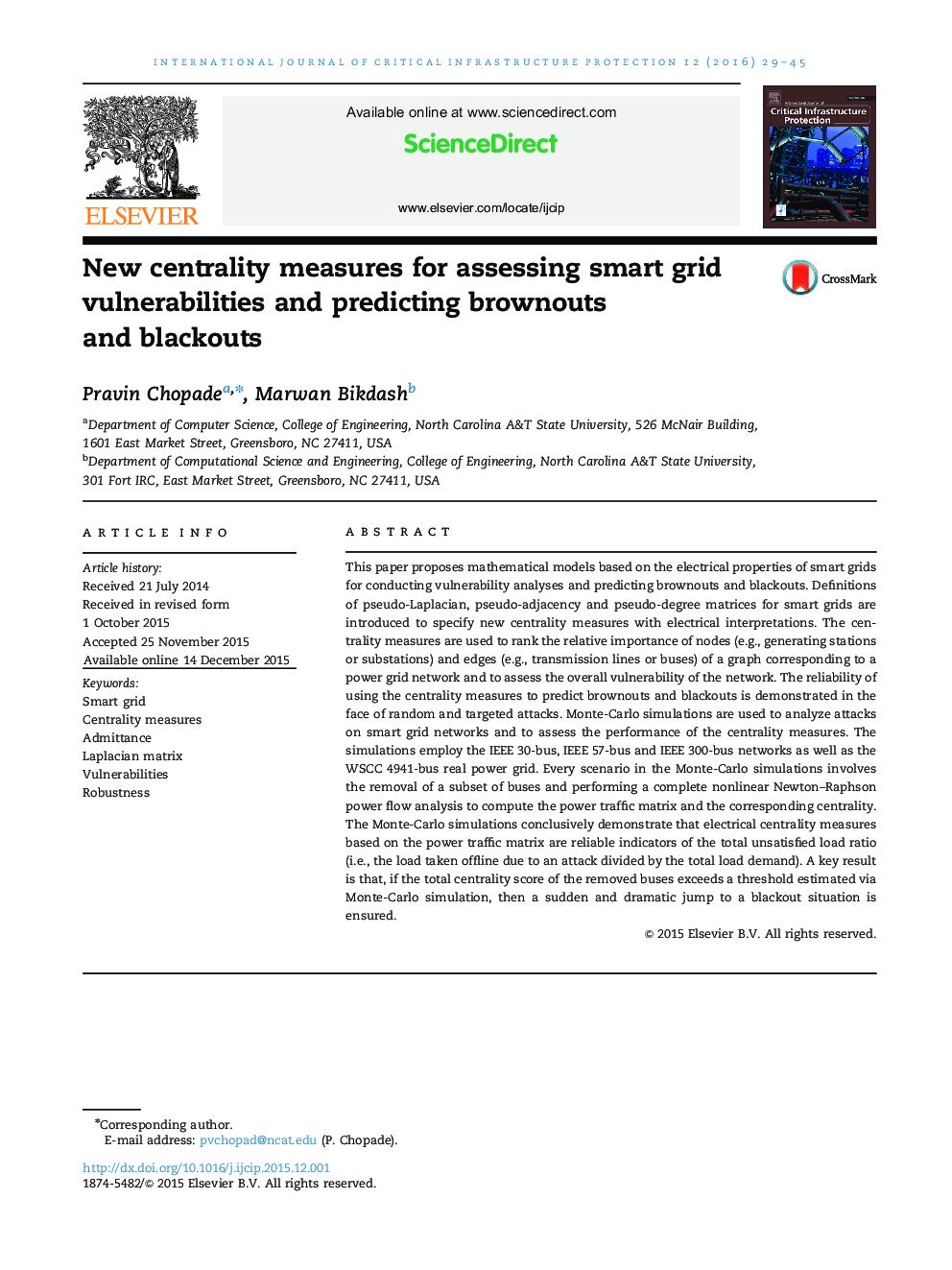| Article ID | Journal | Published Year | Pages | File Type |
|---|---|---|---|---|
| 6747668 | International Journal of Critical Infrastructure Protection | 2016 | 17 Pages |
Abstract
This paper proposes mathematical models based on the electrical properties of smart grids for conducting vulnerability analyses and predicting brownouts and blackouts. Definitions of pseudo-Laplacian, pseudo-adjacency and pseudo-degree matrices for smart grids are introduced to specify new centrality measures with electrical interpretations. The centrality measures are used to rank the relative importance of nodes (e.g., generating stations or substations) and edges (e.g., transmission lines or buses) of a graph corresponding to a power grid network and to assess the overall vulnerability of the network. The reliability of using the centrality measures to predict brownouts and blackouts is demonstrated in the face of random and targeted attacks. Monte-Carlo simulations are used to analyze attacks on smart grid networks and to assess the performance of the centrality measures. The simulations employ the IEEE 30-bus, IEEE 57-bus and IEEE 300-bus networks as well as the WSCC 4941-bus real power grid. Every scenario in the Monte-Carlo simulations involves the removal of a subset of buses and performing a complete nonlinear Newton-Raphson power flow analysis to compute the power traffic matrix and the corresponding centrality. The Monte-Carlo simulations conclusively demonstrate that electrical centrality measures based on the power traffic matrix are reliable indicators of the total unsatisfied load ratio (i.e., the load taken offline due to an attack divided by the total load demand). A key result is that, if the total centrality score of the removed buses exceeds a threshold estimated via Monte-Carlo simulation, then a sudden and dramatic jump to a blackout situation is ensured.
Related Topics
Physical Sciences and Engineering
Computer Science
Computer Networks and Communications
Authors
Pravin Chopade, Marwan Bikdash,
